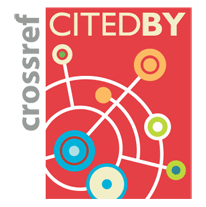The classical two-dimensional Heisenberg model revisited: An $SU(2)$-symmetric tensor network study
Philipp Schmoll, Augustine Kshetrimayum, Jens Eisert, Román Orús, Matteo Rizzi
SciPost Phys. 11, 098 (2021) · published 29 November 2021
- doi: 10.21468/SciPostPhys.11.5.098
- Submissions/Reports
-
Abstract
The classical Heisenberg model in two spatial dimensions constitutes one of the most paradigmatic spin models, taking an important role in statistical and condensed matter physics to understand magnetism. Still, despite its paradigmatic character and the widely accepted ban of a (continuous) spontaneous symmetry breaking, controversies remain whether the model exhibits a phase transition at finite temperature. Importantly, the model can be interpreted as a lattice discretization of the $O(3)$ non-linear sigma model in $1+1$ dimensions, one of the simplest quantum field theories encompassing crucial features of celebrated higher-dimensional ones (like quantum chromodynamics in $3+1$ dimensions), namely the phenomenon of asymptotic freedom. This should also exclude finite-temperature transitions, but lattice effects might play a significant role in correcting the mainstream picture. In this work, we make use of state-of-the-art tensor network approaches, representing the classical partition function in the thermodynamic limit over a large range of temperatures, to comprehensively explore the correlation structure for Gibbs states. By implementing an $SU(2)$ symmetry in our two-dimensional tensor network contraction scheme, we are able to handle very large effective bond dimensions of the environment up to $\chi_E^\text{eff} \sim 1500$, a feature that is crucial in detecting phase transitions. With decreasing temperatures, we find a rapidly diverging correlation length, whose behaviour is apparently compatible with the two main contradictory hypotheses known in the literature, namely a finite-$T$ transition and asymptotic freedom, though with a slight preference for the second.
Cited by 9

Authors / Affiliations: mappings to Contributors and Organizations
See all Organizations.- 1 2 Philipp Schmoll,
- 1 3 Augustine Kshetrimayum,
- 1 3 Jens Eisert,
- 4 5 6 Roman Orus,
- 7 8 Matteo Rizzi
- 1 Freie Universität Berlin / Freie Universität Berlin [FU Berlin]
- 2 Johannes Gutenberg-Universität Mainz / Johannes Gutenberg University of Mainz
- 3 Helmholtz-Zentrum Berlin für Materialien und Energie / Helmholtz-Zentrum Berlin for Materials and Energy [HZB]
- 4 Multiverse Computing
- 5 Donostia International Physics Center [DIPC]
- 6 Basque Foundation for Science / Ikerbasque
- 7 Forschungszentrum Jülich [FZ Jülich]
- 8 Universität zu Köln / University of Cologne [UoC]
- Deutsche Forschungsgemeinschaft / German Research FoundationDeutsche Forschungsgemeinschaft [DFG]
- Horizon 2020 (through Organization: European Commission [EC])
- Ikerbasque, Basque Foundation for Science (through Organization: Basque Foundation for Science / Ikerbasque)
